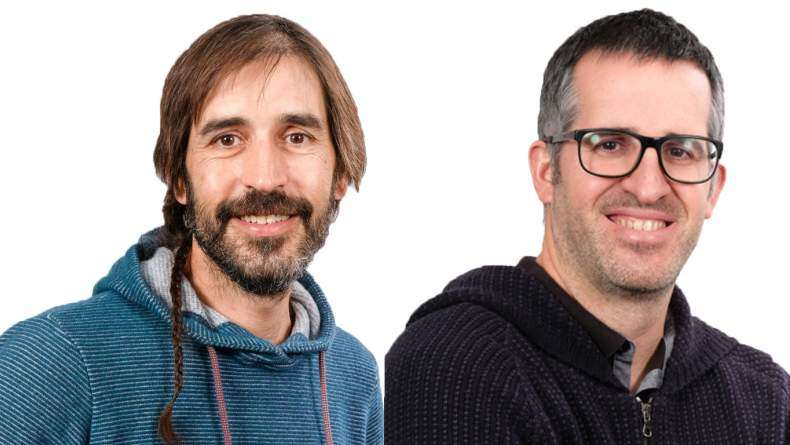BCMaterials Fortnightly Seminars #38

EDUARDO FERNANDEZ
(BCMaterials)
SWITCHING VOLUME FRACTION IN HIGH DENSITY FePt NANODOTS ARRAY
Coercivity and other experimental measures of switching field depend upon the time scale of interest. This time-scale dependence has practical importance in magnetic recording, because the effective time scales of writing and storage are very different. In the following talk, a brief introduction will be given of how to pattern thin film metallic layers using self-assembly block copolymers (BCP). This technique has allow us to fabricate FePt nanodots of 30 nm of diameter and distance between centers of 40 nm. We will present the latest results on the switching volume fraction of this structures, as well as its comparison with FePt thin films. La coercitividad y otras medidas experimentales del campo de inversion dependen de la escala temporal en cuestion. Esta dependencia de escala temporal tiene una importancia práctica en la grabación magnética, debido a que las escalas temporales eficaces de escritura y de almacenamiento son muy diferentes. En la siguiente charla, se dara una breve introducción a como patronar peliculas delgadas metalicas utilizando copolímeros de bloque autoensamblantes (BCP). Esta técnica nos permiten fabricar nanodiscos de FePt de 30 nm de diámetro con una distancia entre centros de 40 nm. Presentaremos los últimos resultados en la fracción de volumen de inversion de campo de estas estructuras, así como su comparación con las películas delgadas de FePt.JAVIER ALONSO
(BCMaterials)
ANISOTROPIC MAGNETIC NANOSTRUCTURES FOR ENHANCED HYPERTHERMIA
Magnetic hyperthermia is one of the most promising techniques for cancer treatment. Despite this, the commonly studied spherical iron oxide nanoparticles for hyperthermia present a relatively low heating efficiency (SAR) that restrict their clinical realization. In order to boost the heating efficiency of iron oxide nanoparticles, one not much studied possibility is to tune their effective anisotropy. In our case, we have focused on studying the heating efficiency of two systems of nanoparticles with enhanced anisotropy: high aspect ratio nanorods and shape/surface modified nano-octopods. The magnetic hyperthermia response of these nanostructures has been studied as a function of the AC magnetic field (0-800 Oe, f = 310 kHz) using both calorimetric and AC magnetometry methods, whose combination have provided us with a deeper understanding of the hyperthermia results. The nanorods exhibit very high SAR values (up to 1200 W/g). The effect of the alignment of the nanorods has been studied by embedding them in agar, and the results indicate that when the nanorods are aligned with the field, the SAR increases more than twice fold in comparison with when they are perpendicular. On the other hand, for the nano-octopods we observed clear differences in the hyperthermia response depending on the field: for lower fields, the smaller sizes giver the best heating results, while for higher fields, the SAR appreciably increases with increasing size, reaching a maximum value of 400 W/g for the biggest octopods (50 nm).
Related news
María Calles, nueva doctora de BCMaterials
Queremos felicitar a María Calles García por haber obtenido su doctorado en Ciencia y Tecnología de Materiales por la UPV/EHU. El 4 de diciembre María realizó una brillante defensa de su tesis...Charla invitada con investigadores del Instituto de Microelectrónica de Barcelona (3 de diciembre)
El próximo 3 de diciembre, a partir de las 12:00 en el auditorio Martina Casiano de Leioa, BCMaterials recibirá a los investigadores titulares del Instituto de Microelectrónica de Barcelona (IMB-CNM...Charla invitada con Liu Yao sobre baterías de metal-litio (2 de diciembre)
El próximo lunes 2 de diciembre, Liu Yao, profesor del Shanghai Institute of Applied Physics presentará una charla invitada en BCMaterials titulada ‘Li Metal Batteries: From Liquid to Solid-State’....Éxito del workshop anual de BCMaterials, dedicado a materiales críticos
La exitosa edición 2025 del workshop anual de BCMaterials reunió el pasado 19 de noviembre en Leioa a un centenar de asistentes para examinar el estado del arte y debatir sobre los materiales...



